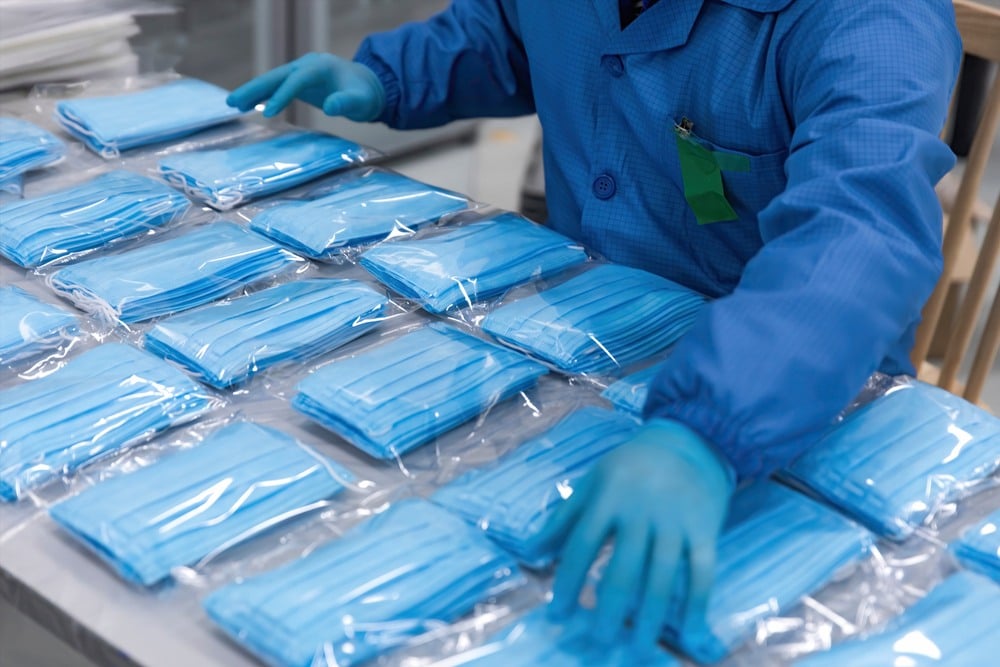Humans have been performing medical procedures since the dawn of time. While the methods have drastically changed throughout the years, practicing medicine will always remain crucial to the survival of people. The implementation of medical devices has really helped shape the healthcare industry.
We’ve been using medical devices as far back as 7000 BC, but it wasn’t until 1976 that the Food and Drug Administration (FDA) could pre-approve medical devices. Whether it’s a cochlear implant, coronary stent, or another device, the last thing a medical device manufacturer, physician, or patient wants is for the equipment to fail.
When it comes to caring for people’s health, there’s no room for error. That’s why there’s immense importance placed on quality when manufacturers design and create medical devices. That’s why they employ medical device quality assurance and quality control teams.
It’s easy to lump these two together, but they’re different. Without emphasizing both aspects, manufacturers can face a costly and potentially deadly issue. By understanding the difference between the two and how they work together, we can drastically improve the functionality of medical devices.
What Is Quality Assurance in Medical Device Manufacturing?

Most people have probably heard of the term quality assurance before, but they aren’t quite sure what it means for medical device manufacturers. The primary thing you need to know about medical device quality assurance is that the main focus is the process.
The process of quality checking a medical device involves making sure that the device will work correctly once a patient uses it. When assessing the quality assurance of medical devices, the process can be effective or ineffective, healthy or unhealthy, and efficient or inefficient.
The whole point of medical device quality assurance testing is to maintain a high-quality product and develop improvements where necessary. If they test a cochlear implant and see that it’s not picking up audio as it should for whatever reason, they’ll look for improvements and try again until it picks up audio.
Unlike other manufacturing testing methods, medical device quality assurance isn’t just one step. It doesn’t even have one plan. The process of medical device quality assurance involves several methods. Each contributes to flaw prevention. Ideally, manufacturers can reduce any flaws significantly or entirely through quality assurance testing.
How Quality Assurance Works Within the Medical Device Manufacturing Industry
When it comes to medical device quality assurance, there’s usually a specific team put together to focus solely on quality. Based on the product design specifications, the quality assurance team will monitor the device’s testing to ensure they meet all regulatory and industry standards.
Those involved in the quality assurance process follow the Plan-Do-Study-Act (PDSA) or Deming Cycle. The Deming and PDSA Cycles are both methods that involve continuous improvement when monitoring a product.
A quality assurance team will establish quality goals and devise different ways to achieve those goals. The team will meet with stakeholders and others who have a say in the final product to come up with what they believe the goals of the device should be. Some of the ways they do this are by altering existing processes or implementing brand-new ones.
They’ll study the processes to ensure quality is high and make any changes if they’re not meeting the quality goals. Finally, they improve the specified changes and then see how the product works with those changes.
What Is Quality Control in Medical Device Manufacturing?
ISO 9001:2015 outlines quality control for medical devices and states that it’s a component of quality management that fulfills the quality control specifications. Unlike medical device quality assurance, which focuses on the process, quality control for medical devices mainly focuses on the inspection of the medical device.
Medical device manufacturers will have a quality control medical devices team staffed with quality control professionals who have a deep understanding of the devices and what to look for quality-wise. These professionals take time to inspect the devices for any broken parts and cracks.
While they can look at the device and see a crack, medical devices are complex, and quality control goes far beyond just looking at them. Even though the quality assurance team will do a thorough job, sometimes mistakes happen, so it’s the quality control medical devices experts’ job to catch them.
Basically, quality control for medical devices is the last step in the medical device manufacturing process before the FDA and other bodies approve the device for use by physicians and patients.
The Quality Control Process
After the medical device quality assurance team passes the product onto quality control, medical devices often receive quality control audits. They’ll look at the manufacturing process to ensure that all the devices are consistently high-quality, and the audits will determine if the manufacturing process is happening correctly.
Some ways that the quality control team works to verify that standards are being met include product sampling, inspection, and lab testing. The inspection methods can vary from company to company and change depending on their data analysis.
Differences Between Quality Assurance and Quality Control
So, what are the differences between quality assurance and medical device quality control? The main differences between the two are that quality assurance takes in employee feedback and customer feedback on the device to make improvements before the product goes to the quality control team.
The quality control team helps verify that the product is working as it should and meeting all standards the manufacturer and industry have in place. Quality assurance happens throughout the manufacturing process to proactively prevent problems, while quality control for medical devices is more reactive and looks for issues afterward.
Despite their differences, both of these components are necessary to ensure that a medical device is up to standards. One can’t function without the other, and both are incredibly important to the medical device manufacturing industry.
Importance of Quality Assurance and Quality Control in the Medical Device Manufacturing Industry
Now that you know what quality assurance and quality control medical devices are in the medical device manufacturing industry, it’s pretty clear why they’re essential. These processes are all about ensuring the products are high-quality and safe for their intended purposes.
It’s better to find deficiencies in the products beforehand before a patient uses them and ends up injured, sick, or possibly dead. There are over a million medical devices that get recalled every year for various reasons, so placing huge importance on medical device quality assurance and quality control is vital.
They’re responsible for preventing harmful devices from reaching patients. Proper quality management is key to keeping the people who need medical devices safe and healthy. They rely on these devices for various aspects of their life, and when they aren’t working correctly, it can have adverse effects.
Without medical device quality assurance and quality control, medical devices would likely see more product recalls. There would be more patients who would be unable to safely get the help they need.
Enhance Quality Assurance and Quality Control for Your Medical Device Manufacturing Line

The medical device manufacturing industry is vital to healthcare systems around the world. The devices created help people live happier and healthier lives and can improve the lives of people living with chronic conditions.
When these medical devices aren’t properly vetted, things can go wrong fast. That’s why quality assurance and quality control for medical devices are so important to the medical device manufacturing industry.
These two parts of the quality management system help ensure that the product doesn’t have a defect and is working up to the standards set forth by the FDA and manufacturing company.
Medical device quality assurance focuses on the process throughout development, while quality control for medical devices ensures there are no defects after it passes through quality assurance. Without quality assurance and quality control, medical devices would be much less safe and effective for people in need. Contact MDI today to learn how we can help streamline your quality assurance and quality control processes.